Ford Puma vs Aston Martin DB12 – Differences & prices compared
Compare performance, boot space, consumption and price in one view.
Find out now: which car is the better choice for you – Ford Puma or Aston Martin DB12?
The Ford Puma (SUV) comes with a Petrol MHEV or Electric engine and Manuel or Automatic transmission. In comparison, the Aston Martin DB12 (Coupe or Convertible) features a Petrol engine with Automatic transmission.
When it comes to boot capacity, the Ford Puma offers 523 L, while the Aston Martin DB12 provides 262 L – depending on how much space you need. If you’re looking for more power, decide whether the 168 HP of the Ford Puma or the 680 HP of the Aston Martin DB12 suits your needs better.
In terms of consumption, the values are 13.10 kWh5.40 L per 100 km for the Ford Puma, and 12.20 L for the Aston Martin DB12.
Price-wise, the Ford Puma starts at 24800 £, while the Aston Martin DB12 is available from 192900 £. Compare all the details and find out which model fits your lifestyle best!
Ford Puma
The Ford Puma presents itself as a stylish compact SUV with a distinctive design that combines practicality with a dynamic driving experience. Its sleek lines and sporty aesthetics make it stand out on the road, while the interior offers a comfortable and tech-savvy environment. With an emphasis on efficiency and a smooth drive, the Ford Puma is well-suited for both urban commutes and countryside adventures.
details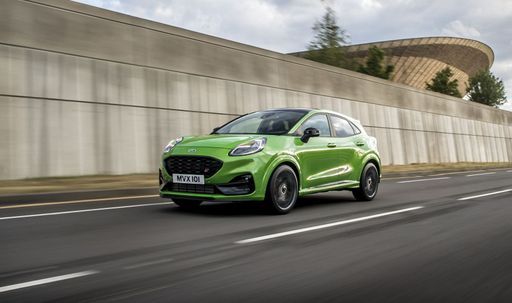 @ puma.fordpresskits.com
@ puma.fordpresskits.com
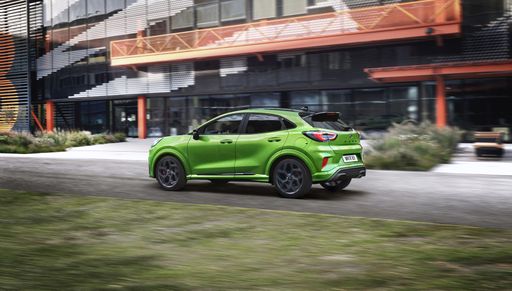 @ puma.fordpresskits.com
@ puma.fordpresskits.com
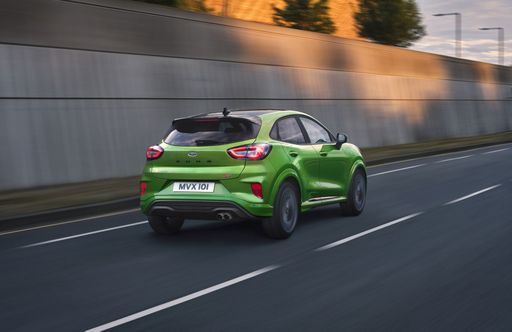 @ puma.fordpresskits.com
@ puma.fordpresskits.com
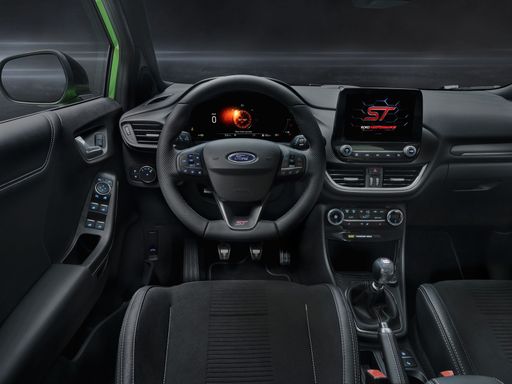 @ puma.fordpresskits.com
@ puma.fordpresskits.com
Aston Martin DB12
The Aston Martin DB12 exudes a perfect blend of sophistication and performance, establishing itself as a cornerstone of automotive excellence. Its sleek design is matched by a meticulously crafted interior that prioritises both comfort and luxury. With an impressive combination of cutting-edge technology and driving dynamics, this vehicle offers an unparalleled experience for enthusiasts and connoisseurs alike.
details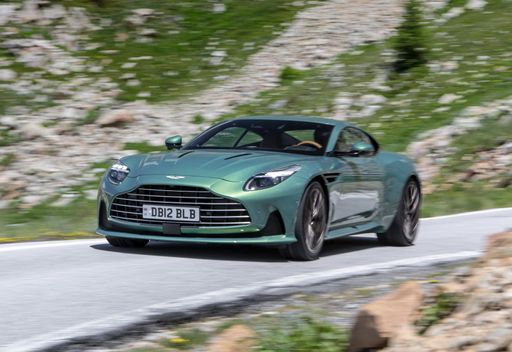 @ media.astonmartin.com
@ media.astonmartin.com
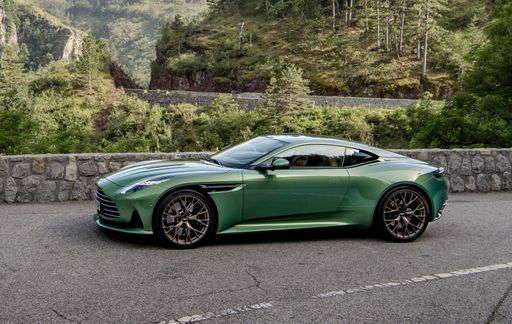 @ media.astonmartin.com
@ media.astonmartin.com
 @ media.astonmartin.com
@ media.astonmartin.com

|

|
|
|
|
Costs and Consumption |
|
|---|---|
|
Price
24800 - 36300 £
|
Price
192900 - 207900 £
|
|
Consumption L/100km
5.4 - 6 L
|
Consumption L/100km
12.20 L
|
|
Consumption kWh/100km
13.1 - 13.7 kWh
|
Consumption kWh/100km
-
|
|
Electric Range
364 - 376 km
|
Electric Range
-
|
|
Battery Capacity
43 kWh
|
Battery Capacity
-
|
|
co2
0 - 136 g/km
|
co2
276 - 278 g/km
|
|
Fuel tank capacity
42 L
|
Fuel tank capacity
78 L
|
Dimensions and Body |
|
|---|---|
|
Body Type
SUV
|
Body Type
Coupe, Convertible
|
|
Seats
5
|
Seats
4
|
|
Doors
5
|
Doors
2 - 3
|
|
Curb weight
1316 - 1563 kg
|
Curb weight
1788 - 1898 kg
|
|
Trunk capacity
456 - 523 L
|
Trunk capacity
206 - 262 L
|
|
Length
4186 - 4226 mm
|
Length
4725 mm
|
|
Width
1805 mm
|
Width
1980 mm
|
|
Height
1550 - 1555 mm
|
Height
1295 mm
|
|
Payload
367 - 469 kg
|
Payload
-
|
Engine and Performance |
|
|---|---|
|
Engine Type
Petrol MHEV, Electric
|
Engine Type
Petrol
|
|
Transmission
Manuel, Automatic
|
Transmission
Automatic
|
|
Transmission Detail
Schaltgetriebe, Automat. Schaltgetriebe (Doppelkupplung)
|
Transmission Detail
Automatikgetriebe
|
|
Drive Type
Front-Wheel Drive
|
Drive Type
Rear-Wheel Drive
|
|
Power HP
125 - 168 HP
|
Power HP
680 HP
|
|
Acceleration 0-100km/h
7.4 - 9.8 s
|
Acceleration 0-100km/h
3.6 - 3.7 s
|
|
Max Speed
160 - 210 km/h
|
Max Speed
325 km/h
|
|
Torque
170 - 290 Nm
|
Torque
800 Nm
|
|
Number of Cylinders
3
|
Number of Cylinders
8
|
|
Power kW
92 - 124 kW
|
Power kW
500 kW
|
|
Engine capacity
999 cm3
|
Engine capacity
3982 cm3
|
General |
|
|---|---|
|
Model Year
2024 - 2025
|
Model Year
2023 - 2024
|
|
CO2 Efficiency Class
D, E, A
|
CO2 Efficiency Class
G
|
|
Brand
Ford
|
Brand
Aston Martin
|
Ford Puma
A Glimpse into the Ford Puma: Fusing Style with Innovation
The Ford Puma stands as a testament to modern engineering fused with style. This compact SUV is not just about aesthetics but brings to the table an array of technical innovations, topped with the reliability and performance Ford is known for. Let's delve into the technical specifics and innovative features that make the Ford Puma a stellar choice for any car enthusiast.
Powertrains and Performance
The Ford Puma is offered with a range of powertrains designed to deliver optimal performance whilst minimising fuel consumption. At the heart of this compact SUV is the 1.0 EcoBoost Hybrid engine, available in both 125 PS and 155 PS variants. This engine is a marvel of engineering, optimised to deliver power efficiently with a remarkable fuel consumption ranging from 5.4 to 5.7 L/100km for manual versions, and slightly higher for the automated variants.
The top-end 1.5 EcoBoost ST variant takes performance up a notch, providing a robust 200 PS that propels the Puma from 0 to 100 km/h in just 6.7 seconds. This variant is perfect for those who prioritise performance and exhilaration in their driving experience.
Mild-Hybrid Technology
The Puma's mild-hybrid technology plays a significant role in enhancing fuel efficiency and reducing emissions. By utilising a belt-driven integrated starter/generator, the Puma recovers energy usually lost during braking, storing it in a 48-volt lithium-ion battery. This stored energy is then used to assist the engine, providing a boost during acceleration and smoothing out the stop-start technology, ultimately leading to enhanced fuel efficiency.
Design and Comfort
The Ford Puma does not compromise on style and comfort with its ergonomic and stylish design. The SUV is available in multiple trims including the ST-Line, Titanium, and the luxurious Vignale editions, each offering unique aesthetic and technological enhancements. These trim levels provide varied offerings in terms of both exterior styling and interior comfort, ensuring there's a Puma that meets every personal preference.
Inside, the Puma offers a driver-focused cockpit with advanced technological integrations such as the SYNC 3 infotainment system, providing seamless connectivity and intuitive control of the vehicle's numerous technological features.
Safety and Technology
Safety remains paramount, and the Ford Puma is equipped with the latest security and technology features. It boasts the Ford Co-Pilot360 suite which includes adaptive cruise control, pre-collision assist with autonomous emergency braking, and lane-keeping assist, enabling a safer driving experience on both city roads and highways.
Versatility and Practicality
Beyond performance and safety, the Ford Puma shines in its versatility. With a boot capacity of 456 litres, it offers ample space for all sorts of adventures, whether you're heading on a family trip or loading sports equipment. Its innovative MegaBox is an extra storage solution, providing additional space below the boot floor.
The Puma's agile handling, paired with its compact dimensions—spanning a length of 4186 to 4266 mm and a width of 1805 mm—makes it an ideal choice for urban commuting and beyond.
Conclusion
In conclusion, the Ford Puma beautifully blends practical features with cutting-edge technology, offering a package that appeals to both the tech-savvy driver and those seeking comfort and reliability. Its range of innovative features, powerful yet efficient engine options, and a design that is both functional and stylish make it a frontrunner in the compact SUV market.
Whether you're drawn by the efficient mild-hybrid engines or the robust performance of the ST variant, the Ford Puma represents a modern driving experience where innovation meets everyday usability.
Aston Martin DB12
Introducing the Aston Martin DB12: A New Era of Luxury and Performance
The Aston Martin DB12, the latest offering from the prestigious British manufacturer, epitomises grandeur, performance, and cutting-edge technology. This luxurious coupe not only carries forward the legacy of its predecessors but also introduces a suite of technological advancements that elevate the driving experience to a whole new level.
Unmatched Power and Performance
At the heart of the Aston Martin DB12 lies a formidable V8 petrol engine, capable of producing an astonishing 680 PS and 800 Nm of torque. This powerplant propels the DB12 from 0 to 100 km/h in just 3.6 seconds, while the automatic transmission ensures a seamless and exhilarating ride. Aston Martin has engineered this masterpiece with a rear-wheel-drive configuration, which delivers an engaging driving experience reminiscent of classic sports cars.
Engineering Excellence and Design
The DB12’s exterior is a testament to Aston Martin's commitment to aesthetic brilliance combined with aerodynamic efficiency. Measuring 4750 mm in length, 1950 mm in width, and 1290 mm in height, the coupe's sleek and sophisticated design speaks volumes about its high-speed capabilities, which can reach up to 325 km/h. The carefully crafted bodywork sits above a robust chassis that offers unparalleled stability at high speeds.
Advanced Technology and Luxurious Interior
Stepping inside the DB12, you're greeted with a blend of elite craftsmanship and state-of-the-art technology. The interior is coated in plush materials, embodying the perfect balance of comfort and opulence. Innovative features such as Aston Martin's Touchtronic system provide intuitive control over various vehicle functionalities, enhancing both convenience and driving pleasure.
Efficiency and Environmental Impact
Despite its powerful performance, the Aston Martin DB12 demonstrates commendable efficiency for a vehicle of its calibre, boasting a consumption rate of 12.2 L/100km. However, it’s important to note the vehicle's CO2 efficiency classification of G, due in part to an emission rate of 278 g/km.
Conclusion: The DB12 Experience
The Aston Martin DB12, priced at €225,000, represents a commitment to excellence, merging high performance with unmatched luxury. With features that cater to automotive enthusiasts seeking a refined and powerful driving machine, it stands as a testament to Aston Martin’s enduring legacy in crafting iconic sports cars.
The prices and data displayed are estimates based on German list prices and may vary by country. This information is not legally binding.
